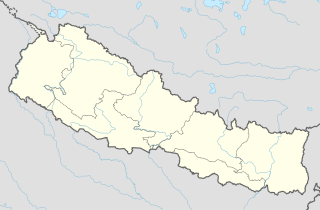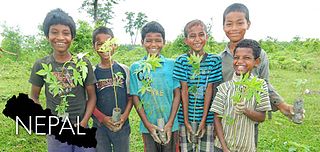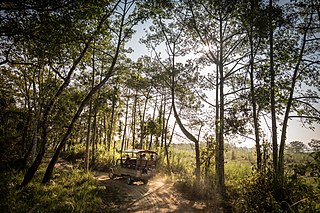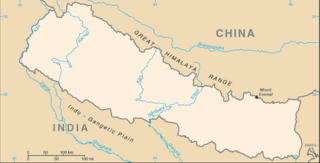 W
WThe Agriculture and Forestry University (AFU) is a public agricultural university with central offices in Rampur, Chitwan, Nepal. It was created by the Parliament of Nepal through a bill passed in June 2010 merging two constituent campuses of Tribhuvan University: the Rampur Agriculture Campus of the Institute of Agriculture and Animal Science and the Forestry Campus, Hetauda of the Institute of Forestry in Hetauda, Makwanpur. The university offers agricultural workforce development and promotes research in agriculture, forestry, and allied disciplines through teaching, research, and extension programs across the country.
 W
WThe Asia Network for Sustainable Agriculture and Bioresources (ANSAB) is a non-governmental organization, headquartered in Kathmandu, Nepal. It was established in 1992. ANSAB is committed to enterprise oriented solutions to biodiversity conservation and sustainable community development.
 W
WAuraiya was a village development committee in Rautahat District in the Narayani Zone of south-eastern Nepal. Now after formation of local government, Auraiya is in Ishnath Municipality. Auraiya is 6 km west of the district headquarters Gaur. The village takes its name from "Amla" which means "Indian gooseberry". At the time of the 2014 Nepal census it had a population of 10,832, in more than 1648 households. The literacy rate is 77%, which is higher than average in Nepal. Most of the people of the village are employed in the "government services" of Nepal like engineering, forestry, medicine, and education.
 W
WClimate change in Nepal is a major problem for Nepal as it is one of the most vulnerable countries to the effects of climate change. Globally, Nepal is ranked fourth, in terms of vulnerability to climate change. Floods spread across the foothills of the Himalayas and bring landslides, leaving tens of thousands of houses and vast areas of farmland and roads destroyed. in the 2020 edition of Germanwatch's Climate Risk Index, it was judged to be the ninth hardest-hit nation by climate calamities during the period 1999 to 2018. Nepal is a least developed country, with 28.6 percent of the population living in multidimensional poverty. Analysis of trends from 1971 to 2014 by the Department of Hydrology and Meteorology (DHM) shows that the average annual maximum temperature has been increasing by 0.056 °C per year. Precipitation extremes are found to be increasing. A national-level survey on the perception-based survey on climate change reported that locals accurately perceived the shifts in temperature but their perceptions of precipitation change did not converge with the instrumental records. Data reveals that more than 80 percent of property loss due to disasters is attributable to climate hazards, particularly water-related events such as floods, landslides and glacial lake outburst floods (GLOFs).
 W
WCommunity forestry is an evolving branch of forestry whereby the local community plays a significant role in forest management and land use decision making by themselves in the facilitating support of government as well as change agents. It involves the participation and collaboration of various stakeholders including community, government and non-governmental organisations (NGOs). The level of involvement of each of these groups is dependent on the specific community forest project, the management system in use and the region. It gained prominence in the mid-1970s and examples of community forestry can now be seen in many countries including Nepal, Indonesia, Korea, Brazil, India and North America.
 W
WThe community forestry program in Nepal is a government effort to reduce forest degradation and to promote sustainable forestry practices as well as to improve the livelihood of the community. It incorporates distinct policies, institutions and practices. The two main goals of the community forestry program is to empower local communities whilst encouraging environmental conservation benefits on the Himalayan forests.
 W
WDeforestation in Nepal has always been a serious issue, which has a severe effect on the lives of poor people. In the past, Nepal was a widely forested nation. However now with the requirement for the extension of rural areas, migration of hills people to the plains, the developing regional interest for timber, and the local residents dependence on firewood as the essential source of energy, less than 30% of the nation's forest cover remains. Due to the continuous deforestation in Nepal, many people and creatures are dying. Around 70 percent of the people in Nepal work in agriculture, even if it is difficult to farm in the prevailing unfavourable weather conditions.
 W
WThe Himalayan Trust is an international non-profit humanitarian organisation first established in the 1960s by Sir Edmund Hillary, who led the trust until his death in 2008. The Himalayan Trust aims to improve the health, education and general wellbeing of people living in the Solukhumbu District. The Himalayan Trust is headquartered in New Zealand where it is a registered charity through the Charities Commission. The Trust has charitable and donee status being a member of the Council for International Development (CID).
 W
WThe International Centre for Integrated Mountain Development (ICIMOD) is a regional intergovernmental learning and knowledge sharing centre serving the eight regional member countries of the Hindu Kush Himalayas. ICIMOD serves eight regional member countries (RMCs) of the Hindu Kush Himalayan region—Afghanistan, Bangladesh, Bhutan, China, India, Myanmar, Nepal, and Pakistan—and the global mountain community.